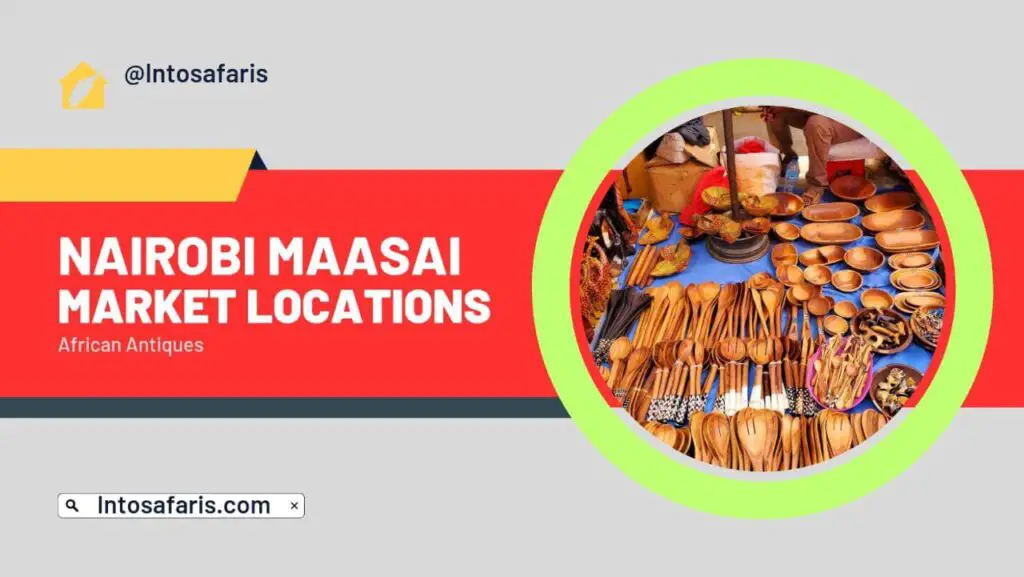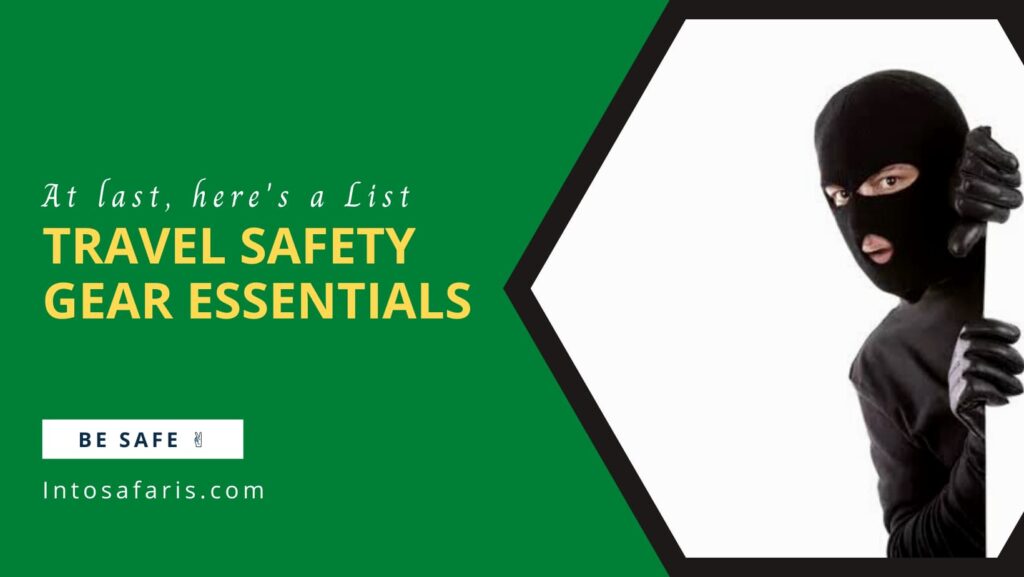Ol Jogi Wildlife Conservancy (The only bear in Africa)
Ol Jogi Wildlife Conservancy where you find the only bear in Africa is a salient spot on Kenyan Map. It has been in my bucket list for a long time. I have been anticipating this untapped gem and yes, the day came.
Located 225Kms (140Miles). It is supposed to be a 4hrs and 30Mins Drive but because of the roads, it is a 6hour drive.
So that morning I had to wake up at 4:00 Am. We were to meet at Nairobi CBD at 5:00 Am. The thrill that came with the pondering tomorrow am going to see the only living bear in Africa, up-close and personal made me an insomniac.
Well, by 4:00 AM certainly I was up, took a cold shower like Amerix advises, dressed up and by 4:30 AM.
I was on the road to meet my travel buddies. Though you can do it solo, there is something about doing these trips with friends.
Sometimes it is not about where you are travelling to but who you are travelling with, however with Oljogi Wildlife Conservancy.
I can do it Solo any day, that place is not only incredible but also charming. By 10:00 Am we were already at the gate ready to explore Oljogi. We started with:
The only bear in Africa (potap) Ol Jogi Wildlife Conservancy.

He’s locally known as Potap (Russian for bear) the only living bear in Africa. He’s a magnet at the Ol-Jogi Game Reserve in Laikipia in Kenya’s Rift Valley.
It will be the first time to see a bear. I was envisaging to see Potab. The first time I laid my eyes on him I was glitching in disbelieve.
I was discerned after he made a loud growl a sign of saying hi to us.
Our guide Mr Daniel started to narrate how Potab came to Kenya and how he survives given Kenya`s climate.
“Potap was brought to Oljogi wildlife Conservancy when he was only four months. He`s now 17years old as of 2020 weighing 490Kgs” said the guide.
He continued to tell us more, he said potab was donated from Moscow. Visitors like us got a chance to interact with the grizzly bear with the Majestic strolls, growling at us.

Bears have a lifespan of between 30 to 35 years, Potab being 17 years now, we will still have him around probably for another decade.
I will be back soon. The guide continued, “To ensure he attains his full life expectancy.
Potab on daily occasion feasts on food fit for a king. For breakfast, his menu ranges from 10 loaves of bread with three litres of milk, to oat porridge, assorted cheese and honey” quipped the guide.
“His supper includes fish, beef, rice, 10 boiled eggs and sweet potatoes. Fruits include watermelons, tree tomatoes and avocados” Said the Guide. By now we were given time to take numerous pictures.
Cheetah at Ol Jogi Wildlife Conservancy.

The guide led us to another Special, Cheetah known as Tsavo, the name came from Tsavo national park as she was adopted from there when she was only four months.
Cheetah is the fastest animal on earth, clocking 93 km/h (Maximum, In Short Bursts, Running) I was going to pose with her.
An open cheetah pen. Imagine the most unimaginable dreamscape where you and your friends can live out your experience. Most unique and memorable safari in Africa. Offering the ultimate exclusive safari experience, Ol Jogi has a prime position in Kenya’s beautiful Laikipia region.
The guide didn’t say much apart from facts about the cheetah, certainly, we posed with her and moved to;
Wild Dogs.

The guide Daniel continued, “We are extremely privileged to have so many wild dogs visit the conservancy recently. Sadly, these remarkable animals are endangered, with fewer than 700 packs worldwide and 70 of those in Kenya”, I asked him a question, “Aren’t they social and how do they hunt?”
He answered, “African wild dogs are highly social, living in packs it is the female who first scatters once mature.
Typically, they hunt by approaching prey silently before chasing it in pursuit at up to 66Kilometers per hour”. He quipped.
He told us, African wild dogs are classed as endangered by the IUCN, as they have disappeared from much of their original range.
The most up to date global estimates from the IUCN Red List is just under 7,000 wild adults in probably fewer than 700 packs worldwide.

Wild Dog Population.
The Laikipia and Samburu county wild dog populations in Kenya are the most populated and known within the country. Laikipia is estimated to be home to approximately 17 packs.
Being in the middle of Laikipia County, Ol Jogi is critical to the region’s wild dog population. The numbers of packs using it vary as the territories shift around.
To which they do at regular intervals. Despite relatively intensive research and monitoring of the Laikipia wild dog populations by the Kenya Rangelands.
Wild Dog and Cheetah Project not all of the Ol Jogi packs include collared individuals.
The last data available indicates 21 adults in 3 packs regularly using Ol Jogi and two more packs comprising another 20 adults.
They pass through the property intermittently. A friend asked, are they about to be extinct? Daniel Said, “Despite habitat fragmentation, human-wildlife conflict and all of the other challenges that wild dogs face.
They seem to be making a remarkable recovery from their near-extinct status in the previous century.
We are delighted to see wild dogs with consistent frequency at Ol Jogi and we continue to retain a key interest in the pack dynamics that occur over the years”.
The Lion, Ol Jogi Wildlife Conservancy.

Now we were focused on this male lion with the black mane. Weighing up to 150 – 225Kgs from the look and a shoulder height of around 1.2 meters.
Just a little knowledge about lions, when it comes to claws, lions have four on their back feet, but five on the front where the dewclaw is found.
The dewclaw does not show in their spoor (footprint) and acts like a thumb that is used to hold down prey.
As of today (2020) this lion is 12years old. Lifespan: In the wild, the lifespan of lions is approximately 15 years, however in captivity, it can be as long as 30 years.
Talking bird.

Talking birds are birds that can mimic the speech of humans. There is debate within the scientific community over whether some talking parrots also have some cognitive understanding of the language.
In Ol Jogi Conservancy wildlife we have a white Mimic Parrot known as Pauline. She’s adorable just like her name.
She loved everybody, talked to everybody, she seemed so happy, certainly, she enjoyed our company.
The Elephant.

This was another anticipation, meeting Bupa the Elephant and family. We met Francis, his best friend, he has spent the last 25 years caring for Bupa.
Spending nearly every day together and their magic bond is certainly undeniable.
African elephants are highly intelligent and have a very high convoluted neocortex, a trait only the humans, apes and dolphins have.
This allows them to display a variety of behaviours such as; grief, compassion, playfulness and learning. Though unlike humans Elephants can have babies until they’re 50 years old.
The lifespan for elephants is between 50 – 70 years but the oldest Elephant to have ever lived (1917-2003) he was named Lin Wang. Who died in a Taiwanese zoo at the ripe old age of 86.
The interaction with Bupa was sentimental, they say Elephants never forgets perhaps Bupa will never forget me.
Juvenile Greater Kudu, Ol Jogi Wildlife Conservancy.

Their numbers are affected by humans hunting them for their meat, hides, and horns. Their horns have long been prized in Africa for use as musical instruments, honey containers, and symbolic ritual objects.
The greater kudu (Tragelaphus strepsiceros) is a woodland antelope found throughout eastern and southern Africa.
Despite occupying such widespread territory, they are sparsely populated in most areas due to. Declining habitat, deforestation, and poaching.
The greater kudu is one of two species commonly known as kudu, the other being the lesser kudu.
Canyons of Africa.

Daniel our guide was now repeatedly telling us time was not on our side and we had to cross across about 1kilometer. To these amazing canyons in the Ol Jogi Wildlife Conservancy.
One of the several unique attractions of this paradise. On reaching our destination we were filled with awe, such a beautiful sighting. This was due to soil erosion but turned out as an attraction sight.
Ol Jogi Wildlife Conservancy Accommodation.

This is no other ordinary accommodation property but more of a Palace. Ol Jogi is one of the most exclusive properties in all of Africa and perfect for high-end clientele and multi-generational families looking for an authentic experience in Kenyan.
The property is in an exclusive 58,000-acre private conservancy in Laikipia, Kenya. The property can accommodate groups of 20+ guest. When they add their ‘Ol Jogi Under the Stars’ luxury tented camp.
Please note they don’t except anything less than 3 nights actually the recommended number is 4 to 7 Nights.
You should be a group from 4 to 6Pax depending on the season and this excludes holidays like Christmas and New years where. A minimum of 5 Nights and a group of 8Pax.
This property is not for a one-man show, you will need a minimum Number. Yes, you will rarely get vacancy as most of the time is fully booked.
I know you`re burning to know the Ol Jogi accommodation Charges, well hold on and take a seat.
Please note most of these funds goes into the reservation of the wildlife. They are Home to nearly 20% of the world’s remaining Gravy’s Zebras. Home to 375 of the world’s remaining Reticulated Giraffe not to mention all the animals in the rescue centre.
Ol Jogi Accommodation Charges.
The Rates Starts from $2950 Per Person Sharing as Shown Below.
| Min 4pax | 5-14Pax | 15-20Pax | 20+ Pax | ||||
| Green Season | 4Pax for 3Nights | $2950 | $2450 | $2000 | $1500 | ||
| High Season | 6Pax for 3Nights | $2950 | $2450 | $2000 | $1500 | ||
| Festive Season | 6Pax for 3Nights | $3450 | $2900 | $2200 | $1780 | ||
| Christmas & New Years | 8Pax for 5Nights | $3450 | $2900 | $2200 | $1780 | ||
| Green Season | 10th Jan-14 June & 15th Sep-14th Dec | ||||||
| High Season | 15th June-14th Sep | ||||||
| Festive Season | 15th Dec-9th January | ||||||
| Christmas & New Years | 20th Dec-27th Dec & 28th Dec-3rd Jan | ||||||
Rates may change without Prior Notice, Please contact Incredible Kenya Adventures for swift and smooth Booking.
Swimming Pool at Ol Jogi.

This is a wild class Swimming pool, Never Seen such a beautiful pool. Only opened for the booked in Quests. It is not only a heated pool but also has a waterfall and an island. The pool is one of a kind and such a pull to this amazing property.
Ol Jogi Wildlife Conservancy Entry Charges.

compared to what you will experience or see. Entry fees are quite affordable for everyone.
Below are the Charges.
Citizens.
- Adult: Kes800
- Child: Kes350 (Ages 3-12 Years)
Non-Resident.
- Adult: USD 60
- Child: USD 40 (Ages 3-12 Years)
Vehicles.
- 5Seats Kes1000/ $10
- 6-14 Seats Kes2500/ $25
- 15 – 25 Seats Kes4500/ $45
- 26 Seats and Above Kes6500/ $65
Watch a Snippet of the Tour.
Late edit: I always keep in touch with the Official resident Guide Daniel, he informed me that; unfortunately Tsavo the cheater succumbed to kidney failure Dec 2019.
Also, Read-:










Zwykle, zanim zycie wreczy nam swoje najwspanialsze prezenty, owija je starannie w najwieksze przeciwnosci losu… – Richard Paul Evans
Great stuff.You may want to actually consider such as something like cheeseburger. What are your thoughts?
Great info! I recently came across your blog and have been reading along. I thought I would leave my first comment. I don’t know what to say except that I have enjoyed reading. Nice blog. I will keep visiting this blog very often
http://www.socjologia.xmc.pl
Thank You🙏.
Najlepszym wojownikiem jest ten, kto zdola wroga przemienic w najlepszego przyjaciela. P. Coelho.
Just keep making good content. Exactly what I needed! I have been browsing the various search engines all day long for a decent article such as this
HI friends, We found your webpage and We to remember its a wonderful spot around here and I want to congratulate You are great. Please continue all the great work.
Thank you Pianino for your Encouragement stopping by. I appreciate 🙏
I want to thnx for the efforts you have made in composing this blog post. I am hoping the same top-grade post from you in the future as well. In fact your creative writing skill has inspired me to start my own blog now. Truly the blogging is spreading its wings rapidly. Your write up is a good model of it.
Am Humbled Tomasz, I wish you all the best as you start a new Journey. Thank You🙏
Hi am castro saitabau a tour guide and wildlife research and management student at centre for tourism training and research .I now have a bucket list to ol jogi very impressed. Have a look at my blog https://explorebunduzlove.blogspot.com/?m=1